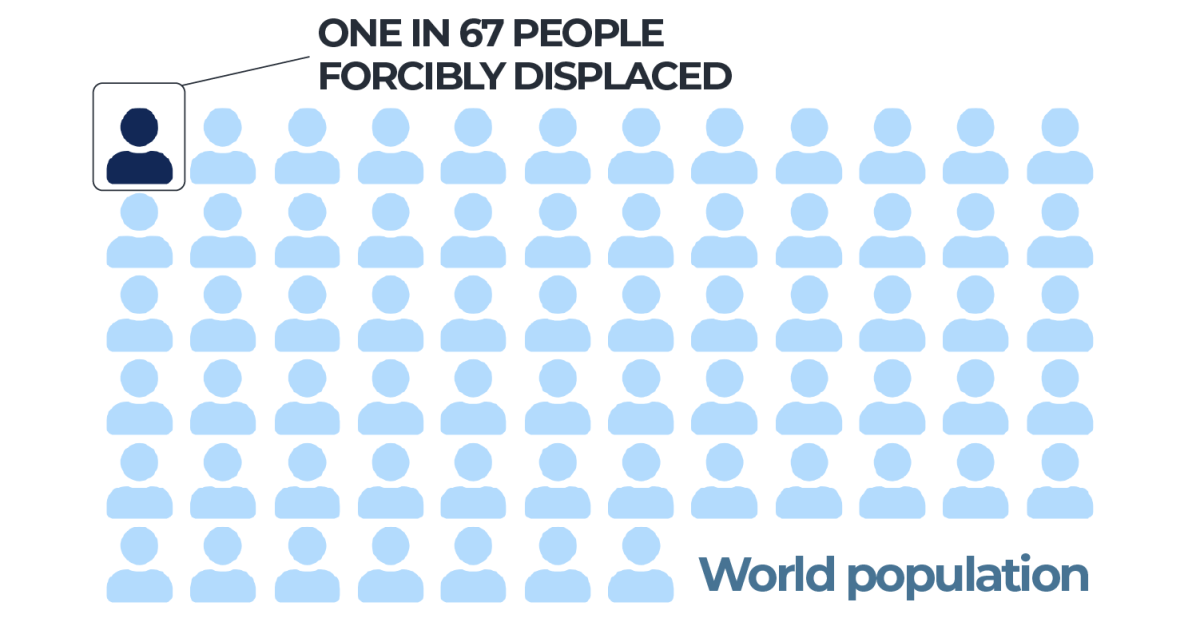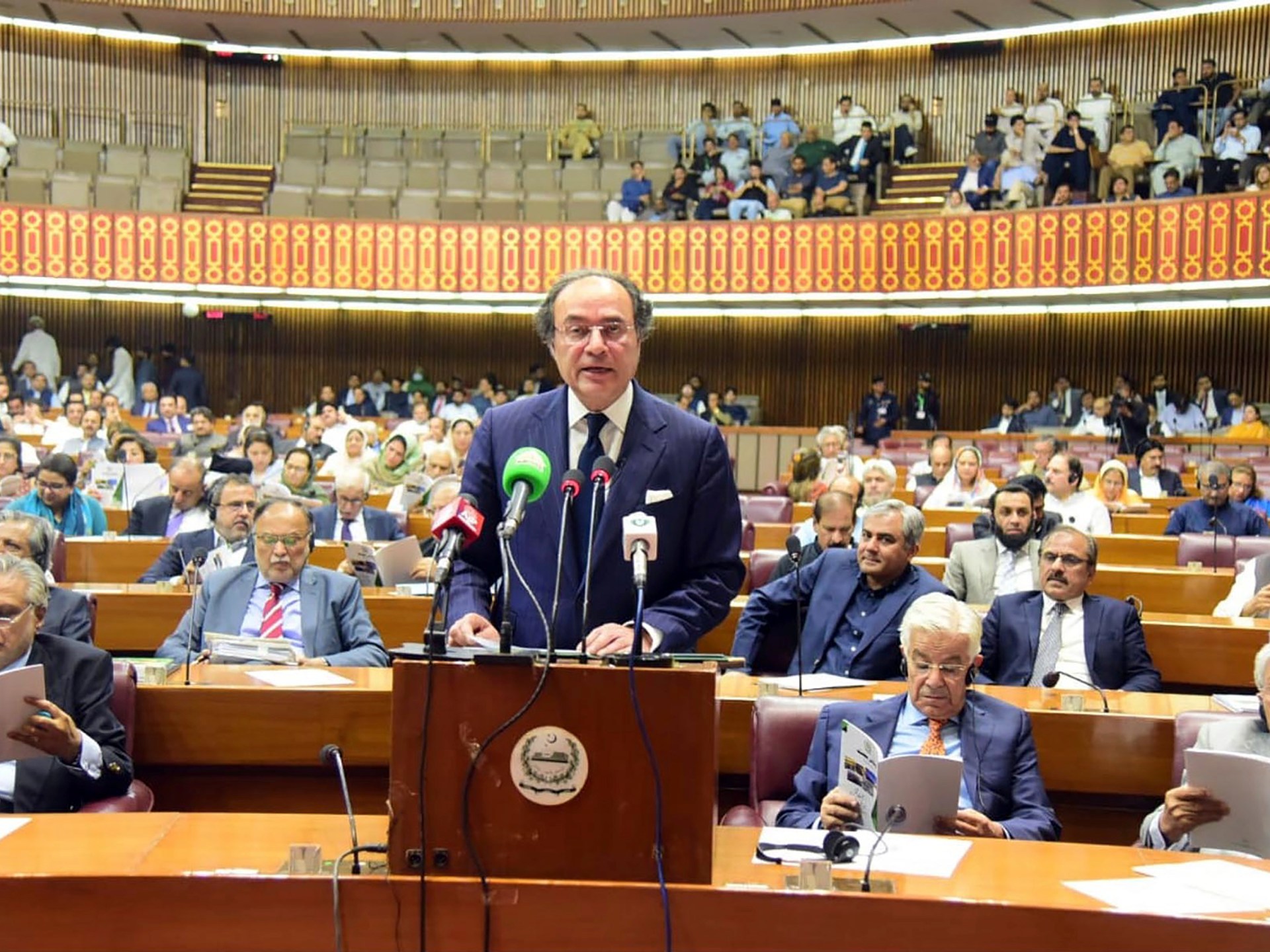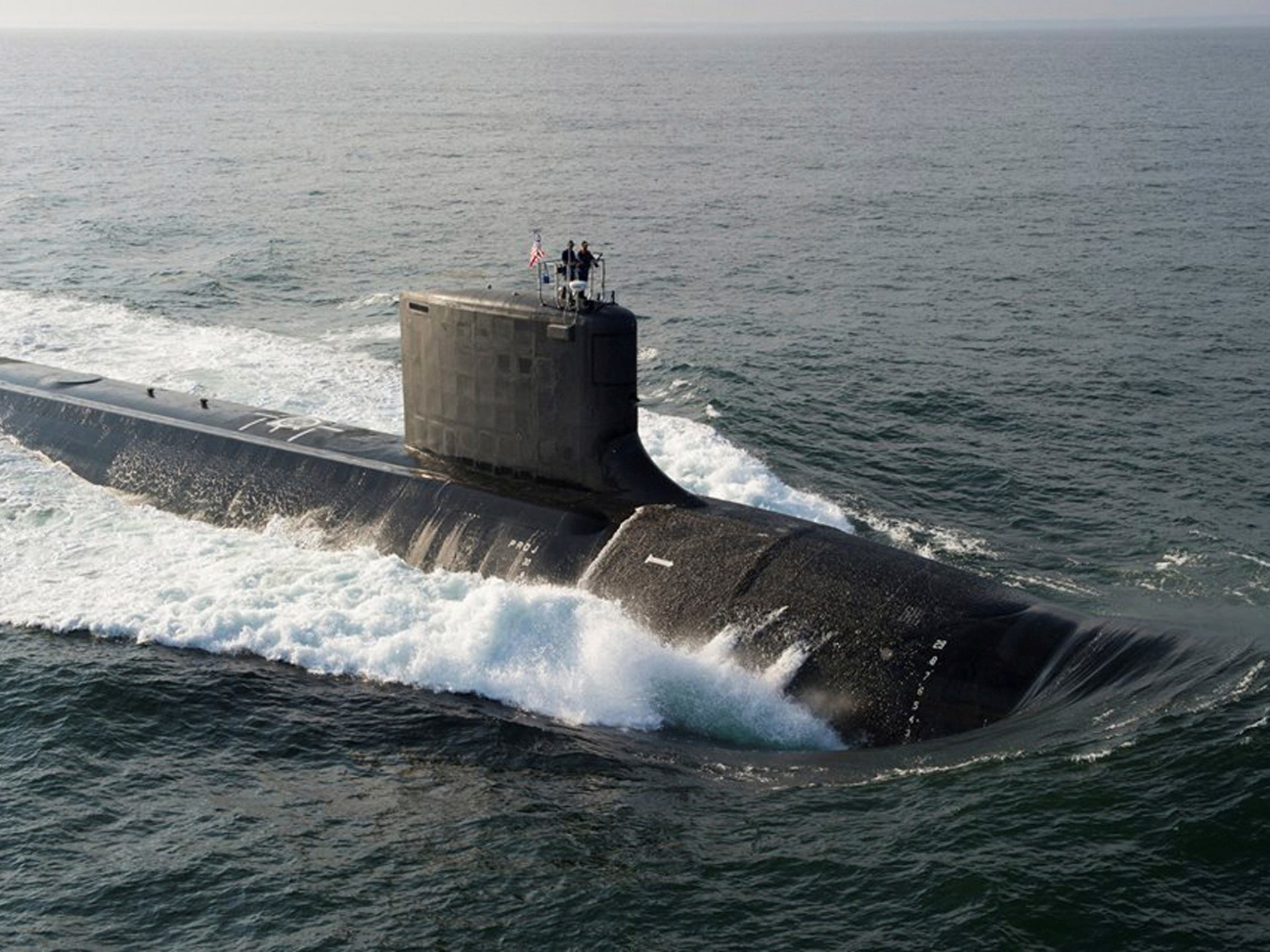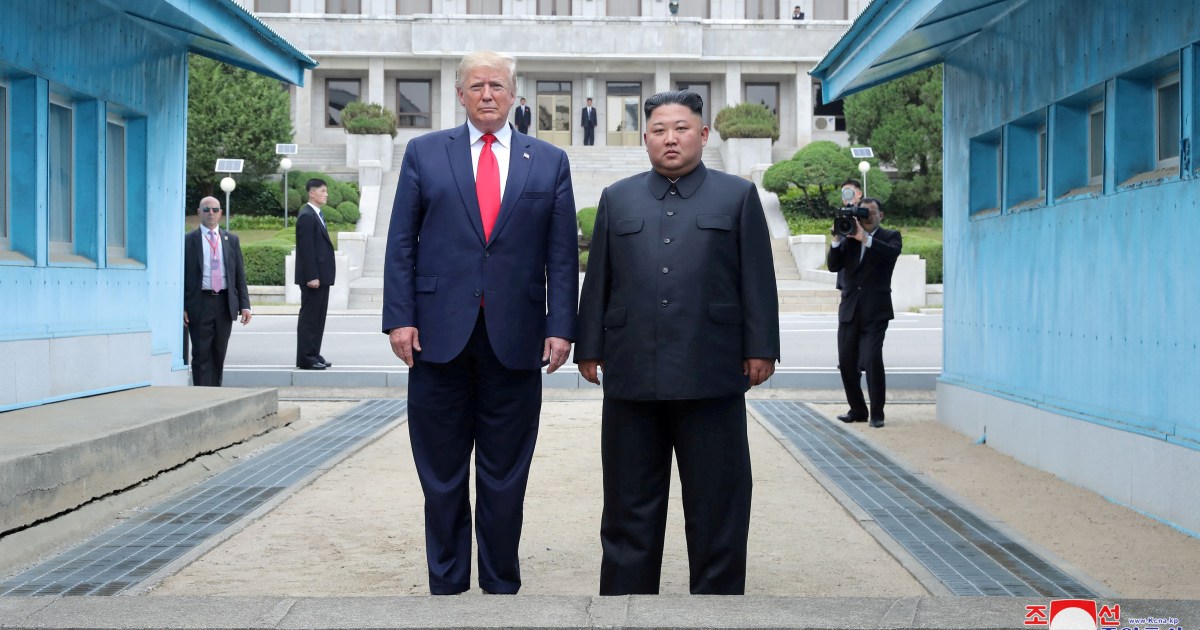England are about to begin their European Under-21 Championship defence in Slovakia.
The Young Lions face the Czech Republic in their Group B opener, but how well do you remember the 2023 heroes?
Related topics
- Football
- England Men’s Football Team

England are about to begin their European Under-21 Championship defence in Slovakia.
The Young Lions face the Czech Republic in their Group B opener, but how well do you remember the 2023 heroes?

At least 123.2 million people, or one in 67 individuals worldwide, remain forcibly displaced, according to a report released by the United Nations High Commissioner for Refugees (UNHCR) today.
The number of displaced people has increased by seven million people, or 6 percent, compared with the end of 2023. This continues a 13-year trend which has seen a year-on-year increase in the number of displaced people globally.
However, the UNHCR estimated that forced displacement fell in the first four months of this year, to 122.1 million by the end of April 2025.
“We are living in a time of intense volatility in international relations, with modern warfare creating a fragile, harrowing landscape marked by acute human suffering. We must redouble our efforts to search for peace and find long-lasting solutions for refugees and others forced to flee their homes,” said UN High Commissioner for Refugees Filippo Grandi.
Of the 123.2 million total forcibly displaced, 73.5 million are internally displaced within their own countries due to conflict or other crises. This is an increase of 6.3 million compared with 2023. Internally displaced people (IDPs) account for 60 percent of the majority of those who have been forced to flee globally.
In Gaza, the UN agency for Palestinian refugees (UNRWA) estimates that about 90 percent of the population, or more than two million people, have been displaced by Israel’s continuing assault.
As of 2024, the number of refugees stood at 42.7 million, a decrease of 613,600 from the previous year. Of this number, 31 million are under the UNHCR’s mandate, 5.9 million are Palestinian refugees under the mandate of UNRWA, and another 5.9 million need international protection.
According to the UNHCR, the lower number of refugees in 2024 reflects lower estimates of Afghan and Syrian refugees and updated reporting on Ukrainian refugees. However, the number of Sudanese refugees increased by nearly 600,000 to 2.1 million.
The number of asylum seekers – people seeking protection in another country due to persecution or fear of harm in their home country – waiting for a decision stood at 8.4 million, an increase of 22 percent from the previous year.
This puts the number of displaced people globally at one in 67 people.
In 1951, the UN established the Refugee Convention to protect the rights of refugees in Europe in the aftermath of World War II. In 1967, the convention was expanded to address displacement across the rest of the world.
When the Refugee Convention was born, there were 2.1 million refugees. By 1980, the number of refugees recorded by the UN surpassed 10 million for the first time. Wars in Afghanistan and Ethiopia during the 1980s caused the number of refugees to double to 20 million by 1990.
The number of refugees remained fairly consistent over the next two decades.
However, the invasion of Afghanistan by the United States in 2001 and that of Iraq in 2003, together with the civil wars in South Sudan and Syria, resulted in refugee numbers exceeding 30 million by the end of 2021.
The war in Ukraine, which started in 2022, led to one of the fastest-growing refugee crises since World War II, with 5.7 million people forced to flee Ukraine in less than a year. By the end of 2023, six million Ukrainians remained forcibly displaced.
The number of IDPs has doubled in the past 10 years, with a steep incline since 2020. Conflict in Sudan between the Sudanese army and the paramilitary Rapid Support Forces has triggered the world’s largest displacement crisis, with a total of 14.3 million Sudanese remaining displaced at the end of 2024. This was 3.5 million more people than 12 months prior.
In 2024, more than one-third of all forcibly displaced people globally were Sudanese (14.3 million), Syrian (13.5 million), Afghan (10.3 million) or Ukrainian (8.8 million).
In 2024, 1.6 million refugees returned to their home country.
“However, many of these refugees returned to Afghanistan, Syria, South Sudan or Ukraine, despite the fragile situations in each,” Matthew Saltmarsh, UNHCR’s media head, said. “Returns to places in conflict or instability are far from ideal and often unsustainable.”
In 2024, 8.2 million IDPs returned to their area of origin.
The UNHCR estimates that nine in 10 refugees and IDPs returned to just eight countries, which included Afghanistan, the Democratic Republic of the Congo (DRC), Ethiopia, Lebanon, Myanmar, South Sudan, Syria and Ukraine.
“Large IDP returns during the year were also registered in several countries that simultaneously saw significant new displacements, such as the DRC (2.4 million), Myanmar (378,000), Syria (514,000) or Ukraine (782,000),” Saltmarsh said.

With temperatures rising and summer kicking into gear, our hair is at even more risk of becoming dry and damaged in the sun. If you’re trying to find a solution to “straw-like” hair but don’t want to pay a fortune for expensive treatments that may not work, you’re in luck.
From the cult-favourite and viral brand, Color Wow, this leave-in hair treatment is set to be your new go-to for rescuing dried and damaged locks. The 50ml bottle normally retails for the wallet-friendly price of £12, but can now be added to your haircare routine for the reduced price of £9.60 from Space NK. If you’d rather buy the full-sized (200ml) product, you can shop it at Lookfantastic, Space NK, All Beauty, and Sephora.
READ MORE: M&S finally restarts online orders six weeks after the cyber attack—but there’s a catch
READ MORE: Helen Flanagan stuns in figure-hugging maxi that’s perfect for holiday nights out
This Colour Wow tonic is a leave-in treatment that restores colour-treated hair by moisturising and protecting it.
This treatment helps replenish silkiness and manageability by delivering a blend of fatty acids and emollients that bind with your hair, creating a ‘lubricating film’ that mimics the moisturising, natural outer layer of hair that is often stripped away during colour processing.
Infused with Coconut Oil, the formula penetrates deep down to hydrate within the cortex for improved strength and flexibility, while instantly transforming dehydrated, straw-like hair into fluid, silky, supple strands.
This Colour Wow treatment is set to make a “major difference” with just one blow dry. It acts as a heat protector as it revives dry, dehydrated, and damaged curls.
Over at Lookfantastic, shoppers can’t stop raving about this hair treatment as it’s amassed hundreds of 5-star reviews. One thrilled buyer beams: “I definitely notice the effects of Color Wow Dream Cocktail Coconut after blow drying. My hair feels smoother, my flyaways are tamed, and there’s noticeably less frizz. It makes a real difference to the finish of my hair. Love this product!”
Another happy customer raves: “Has made a huge difference to my hair, don’t need to use much as it goes a long way, wouldn’t be without it now.”
This shopper says: “This stuff is magic. In the short time I’ve been using it, it’s totally transformed my hair. I love it and it smells amazing.”

Islamabad, Pakistan – Pakistan has increased its defence spending by more than 20 percent – the most substantial hike in a decade – following last month’s military confrontation with neighbouring India.
Presenting the annual federal budget on June 10, Finance Minister Muhammad Aurangzeb proposed an allocation of 2.55 trillion rupees ($9bn) for the country’s three armed services – the army, air force and navy – amounting to 1.97 percent of Pakistan’s gross domestic product (GDP), up from 1.7 percent in the previous budget.
“The security situation in the country is precarious, and the armed forces have rendered commendable service in protecting the borders,” Aurangzeb said during his speech, as India has threatened to carry out strikes if armed groups carry out attacks on India or Indian-administered Kashmir.
But analysts say that Islamabad will need to walk a fine balance in spending more on defence at a time when its fragile economy is under strict oversight from the International Monetary Fund (IMF), and cuts in social sector expenditure could embolden the opposition.
On May 7, India carried out missile strikes on what it called “terrorist infrastructure” in Pakistan and Pakistan-administered Kashmir after blaming Islamabad for backing fighters responsible for the killing of 26 people in Indian-administered Kashmir’s Pahalgam town on April 22.
Pakistan denied involvement in the Pahalgam attacks, demanding a “credible, transparent, independent” investigation. Islamabad said innocent civilians were killed in India’s attacks on May 7.
Tensions escalated after the two nuclear-armed neighbours engaged in tit-for-tat missile and drone attacks over four days, primarily targeting each other’s military installations.
By the time a ceasefire was announced by United States President Donald Trump on May 10, in excess of 70 people had been killed – more than 50 in Pakistan and at least 20 in India.
Against that backdrop, Pakistan’s defence hike was expected, say analysts. India, which presented its budget before the conflict, also increased its defence spending to $78.7bn, a 9.5 percent rise from the previous year.
But unlike India, Pakistan has more than a neighbour to keep an eye on: It also confronts pressure from the IMF. The IMF approved a 37-month, $7bn loan programme for Pakistan last September, its 25th since 1958. The most recent tranche of $1.3bn was released in May this year, a day before the ceasefire between India and Pakistan took place. But in exchange, the global lender has been pressuring Pakistan to streamline its expenditure, reduce subsidies and improve the efficiency of its governance structures.
Pakistan appears to have paid heed to those demands from the IMF. Even as its defence spending has gone up substantially, its overall budget for the next fiscal year has been slashed by 17.57 trillion rupees ($62bn), marking a 6.9 percent decrease from last year.
The defence spending hike, while massive, is in line with growing defence allocation in recent years. The military’s budget has nearly doubled in the past five years. In fiscal year 2020-21, the allocation stood at 1.28 trillion rupees ($4.53bn).
The army, long seen as the most powerful institution in Pakistan’s defence and political spheres, has received 1.17 trillion rupees ($4.1bn), accounting for nearly 46 percent of the total defence budget. The air force and navy received just more than 520 billion rupees ($1.8m) and 265.9 billion rupees ($941m), respectively.
Pakistan’s military budget increase also reflects a broader global trend. A report published in April by the Stockholm International Peace Research Institute (SIPRI), which specialises in conflict and arms control research, stated that global military expenditure reached $2.7 trillion in 2024, a 9.4 percent increase from the previous year and the “steepest year-on-year rise since the end of the Cold War”.
Hina Shaikh, a Lahore-based economist with the International Growth Centre (IGC), said the increase in Pakistan was expected and reflects the government’s continued prioritisation of security amid geopolitical tensions and domestic instability.
“While understandable from a strategic lens, this increase does come when economic recovery is just beginning to happen, but still fragile, inflation is easing and fiscal space is constrained,” she told Al Jazeera.
Ali Hasanain, an economics professor at the Lahore University of Management Sciences (LUMS), called the hike in defence spending both “inevitable and necessary” but warned against sacrificing long-term development.
“The only way out of this dilemma for Pakistan is to undertake deep structural reforms of the sort which no government has shown a commitment to yet, so that both the economy and defence spending can stay robust over the medium and long terms,” Hasanain said.
While most analysts agree that the defence spending hike is a fallout of the May conflict, a major challenge for the government is to fund it without compromising the social welfare, health, or education sectors.
Due to Pakistan’s sizable external debt, recorded at $87.4bn according to the latest government figures, the largest share of the national budget is consumed by debt servicing, which stands at $29bn, which is almost 47 percent of total expenditure.
In the budget announced on Tuesday, Pakistan’s government has cut subsidies. The budget also outlines plans to expand the tax base, removes exemptions, and introduces new taxes to raise public revenue.
The opposition party of jailed former Prime Minister Imran Khan dubbed the budget “anti-people” and “crafted for the elite.”
The Pakistan Tehreek-e-Insaf (PTI) party, which remains banned, said on Wednesday that the budget provided no real relief to the public, as government staff salary raises were low and agriculture, the mainstay of the country’s economy, witnessed decline.
Sajid Amin Javed, a senior economist at the Sustainable Development Policy Institute (SDPI), said that the combination of a decline in the interest payments Pakistan owes its debtors this year, and the cut in subsidies had provided the government “some fiscal space”.
Still, others highlighted that Pakistan’s defence spending, while the highest in South Asia as a percentage of GDP, has declined in relative terms compared to past decades as it has been forced to set money aside to repay loans.
Hasanain of LUMS said that Pakistan now spends less, as a percentage of GDP, than countries like Singapore (2.8 percent), Greece (3.1 percent), Poland (4.2 percent), or the United States (3.4 percent), and nearly three times less than Saudi Arabia (7.3 percent), Russia (7.1 percent), or Israel (8.8 percent).
But he pointed out that Pakistan also collects far less tax than most other countries, so the defence spending hike still eats up a giant chunk of the government’s revenue. “A low tax to GDP ratio means that defence spending is a bigger burden for the government in Pakistan than most other countries in the world.”
The last few years have been deeply turbulent for Pakistan’s economy. Foreign reserves fell to just under $3bn in 2023, bringing the country of 250 million people to the brink of default.
Foreign reserves have since risen to $11bn following IMF deals.
Similarly, the Pakistani rupee, having lost more than 60 percent of its value against the US dollar over the last two years, has now stabilised between 280 and 282 rupees per dollar.
Javed of SDPI says these indicators show Pakistan’s macroeconomic fundamentals are stabilising, but the public impact remains uncertain.
“It is a budget of stabilisation, made in consultation with the IMF, to ensure that the country’s revenue, growth and fiscal deficit targets are met. But on the whole, it remains a traditional budget, with no deep-rooted structural changes or strategic change visible, at least for now,” he said.
Economist Shaikh argued that the budget lacks inclusive or pro-poor reforms and shows limited investment in sectors like health and education.
“This may be called a technocrat’s budget under IMF constraints, fiscally conservative, tax-heavy, and focused on short-term stabilisation. It is focused on restoring macroeconomic stability, controlling inflation, and building reserves,” she said.
Hasanain, however, says that the IMF principally concerns itself with helping countries move back towards stability, and does not consider long-term, sustainable growth as its purview.
“By cutting expenditures and running primary budget surpluses, the government is indeed moving out of the acute debt crisis it found itself in two years ago, but the larger project of correcting longstanding structural deficiencies is, despite receiving some lip service, largely neglected to date,” he said.

Australia’s Defence Minister Richard Marles said he is “very confident” that the AUKUS security pact between Australia, the United States and the United Kingdom will continue to move forward despite news that the Pentagon is reviewing the 2021 deal between the three nations.
News of the review was first reported on Thursday as US defence officials said re-assessing the pact was necessary to ensure that the military deal, agreed to with much fanfare under former US President Joe Biden, was in line with US President Donald Trump’s “America First” agenda.
The pact includes a deal worth hundreds of billions of dollars to provide Australia with closely-guarded nuclear propulsion technology. Only five other countries besides the US can build nuclear submarines: the UK, China, Russia, France and India.
“The meetings that we’ve had with the United States have been very positive in respect of AUKUS,” Defence Minister Marles told the ABC network.
A review of the deal is “something that it’s perfectly natural for an incoming administration to do … It’s exactly what we did”, Marles said.
“There is a plan here. We are sticking to it, and we’re going to deliver it,” he said.
Under the terms of the AUKUS deal, Australia and the UK will work with the US to design nuclear-class submarines ready for delivery to Australia in the 2040s, according to the US Naval Institute.
The three countries are already close military allies and share intelligence, but AUKUS focuses on key strategic areas, such as countering the rise of China and its expansion into the Pacific.
Due to the long lead time in building the submarines under the AUKUS deal, Australia also agreed to buy up to three Virginia-class nuclear-powered submarines during the 2030s. The US and UK also plan to start the rotational deployment of their submarines out of Australia in 2027.
But some Trump administration officials, such as Pentagon policy adviser Elbridge Colby, say the submarine deal puts foreign governments ahead of US national security.
“My concern is why are we giving away this crown jewel asset when we most need it?” Colby said last year.
Other officials, including US Representative Joe Courtney from Connecticut – a US state which has an industry focused on building submarines for the US Navy – say the deal is in the “best interest of all three AUKUS nations, as well as the Indo-Pacific region as a whole”.
“To abandon AUKUS – which is already well under way – would cause lasting harm to our nation’s standing with close allies and certainly be met with great rejoicing in Beijing,” Courtney said.
Australian Prime Minister Anthony Albanese is expected to discuss the deal when he meets Trump next week during a meeting of the G7 leaders in Canada.
Earlier this year, Australia made a $500m payment towards AUKUS and plans to spend $2bn this year to speed up the production process in the US of the Virginia-class submarines.
The UK, like Australia, has downplayed concerns that the Trump administration could renege on the pact.
A UK official told the Reuters news agency that the deal is “one of the most strategically important partnerships in decades” that will also produce “jobs and economic growth in communities across all three nations”.

United States President Donald Trump is “receptive” to dialogue with North Korean leader Kim Jong Un, the White House has said, after a South Korea-based news site reported that Pyongyang repeatedly rebuffed Trump’s outreach efforts.
White House Press Secretary Karoline Leavitt said on Wednesday that Trump would like to build on the “progress” made during his 2018 summit with Kim.
The summit in Singapore marked the first-ever meeting between a sitting US president and the leader of North Korea, which has been ruled by the Kim dynasty for nearly eight decades.
But while historic, the summit, which was followed by meetings in Vietnam and at the Demilitarized Zone dividing North and South Korea, failed to achieve Washington’s goal of halting the advance of Pyongyang’s nuclear weapons programmes.
“The president remains receptive to correspondence with Kim Jong Un,” Leavitt told reporters.
“As for specific correspondence, I will leave that to the president to answer,” Leavitt added.
Leavitt’s remarks came in response to a question about a report in NK News that said North Korean diplomats in New York had repeatedly refused to accept a letter from Trump to Kim.
Trump’s letter was aimed at “reopening communication channels between Washington and Pyongyang”, Seoul-based NK News reported, citing an “informed high-level source”.
Trump’s reported outreach comes as South Korea’s newly elected president, Lee Jae-myung, is leading Seoul to adopt a more reconciliatory posture towards Pyongyang.
On Wednesday, South Korea switched off loudspeakers broadcasting K-pop and other propaganda across the inter-Korean border in one of the first moves by Lee’s administration to lower tensions between the sides.
South Korea’s Ministry of National Defence said the move would help to “restore trust in inter-Korean relations” and “promote peace on the Korean Peninsula”.